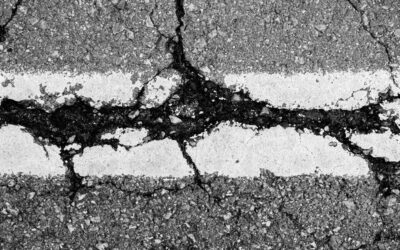Asphalt driveways are a popular choice in San Antonio because they are durable, cost effective, and attractive. When properly installed and maintained, an asphalt driveway can last 15 to 20 years or more. However, the Texas heat, heavy rains, and natural wear eventually take their toll. Small cracks and surface fading can often be fixed with repairs or sealcoating, but there comes a point when replacement is the smarter and more cost effective option.
If you are wondering whether it is time to replace your asphalt driveway, this guide will walk you through the top five warning signs to look out for. We will also explain why these issues occur, what happens if you ignore them, and how a professional asphalt contractor in San Antonio can help.
The Challenges of Asphalt in San Antonio
Before diving into the signs, it helps to understand why asphalt driveways in San Antonio face unique challenges. The local climate is one of the biggest factors. With summer temperatures regularly topping 100 degrees, the sun’s UV rays break down asphalt binders more quickly than in cooler regions. Heat softens the surface, making it more vulnerable to ruts, cracks, and general deterioration. On the flip side, sudden rainstorms can cause water to seep into the pavement. When the base is compromised by moisture, the driveway loses stability.
Traffic is another issue. Even residential driveways can bear the weight of SUVs, trucks, and trailers. Combined with the climate, this stress accelerates wear. That is why homeowners here tend to face major driveway issues sooner than those in milder climates. Knowing when to act helps you avoid constant repairs that do not last and invest in a long term solution.
Sign #1: Deep or Widespread Cracks
Almost every asphalt driveway develops cracks over time. Hairline cracks are not a major concern and can usually be sealed. The problem is when cracks become wide, deep, or spread across large areas. These types of cracks often signal structural failure beneath the surface.
Why Cracks Happen
- Heat and sun damage cause asphalt to dry out and become brittle
- Water penetration allows moisture to weaken the base layers
- Vehicle stress creates flexing that eventually splits the surface
When cracks are left untreated, they become pathways for water. As water reaches the subbase, it causes erosion, making the driveway unstable. What begins as a small issue quickly grows into a network of deep fissures.
When to Replace
If your driveway has multiple cracks longer than a few feet, especially those that are more than a quarter inch wide, replacement may be necessary. Sealing at this stage will not restore the integrity of the pavement. A professional can assess whether resurfacing (adding a new asphalt layer) or full replacement is the right solution.
Sign #2: Potholes and Surface Deformation
Potholes are one of the clearest indicators that your driveway is failing. They not only create a nuisance when driving in and out but also pose safety risks. Children can trip over them, and vehicles can sustain tire or suspension damage.
How Potholes Form
Potholes typically develop when water seeps through cracks, freezes or weakens the subbase, and then the weight of vehicles causes pieces of asphalt to break away. In San Antonio, freezing is less common, but water erosion and heavy vehicles are more than enough to create the problem.
Surface deformation such as rutting or depressions is another red flag. These dips show that the base layers are shifting under stress. You may notice water pooling in these areas after rain, which makes the problem worse.
When to Replace
One or two small potholes can sometimes be patched effectively. But when potholes keep returning, or when the driveway has widespread depressions, patching is only a temporary fix. Replacement ensures a stable new base and surface that can handle traffic and weather.
Sign #3: Drainage Issues and Standing Water
A properly installed driveway should direct water away from the surface and toward the street or yard. If you notice water pooling on your driveway after rain, that is a sign of poor drainage. In San Antonio, where sudden storms can dump several inches of water in a short period, this problem is especially important.
Why Drainage Matters
Water is one of the biggest enemies of asphalt. Standing water seeps into cracks, washes away fine materials in the subbase, and accelerates deterioration. Over time, this process leads to cracks, potholes, and base failure. Additionally, water left standing can encourage algae or moss growth, creating slippery and unsightly areas.
When to Replace
If poor drainage is due to grading or an uneven surface, replacement is often the best solution. A new driveway can be properly designed with the right slope to move water away. Sometimes, contractors will also recommend installing drainage features alongside the driveway.
Sign #4: Age and Repeated Repairs
No matter how well you maintain your driveway, asphalt does not last forever. In San Antonio, the average lifespan of a residential asphalt driveway is about 15 years. After that, even with sealcoating and repairs, the surface begins to deteriorate more rapidly.
Signs of Aging Asphalt
- Faded gray color caused by sun exposure
- Brittle, rough texture instead of a smooth finish
- Multiple repairs that no longer blend with the surface
- Widespread cracking or patchwork appearance
If your driveway looks like a quilt of repairs, that is a strong signal it has reached the end of its life cycle. At this stage, continuing to spend money on patching is often less cost effective than investing in a replacement.
When to Replace
If your driveway is approaching or past 15 years and requires frequent maintenance, replacement provides a fresh start. A new installation with modern materials and proper design ensures durability for the next two decades.
Sign #5: Significant Structural Damage
The most serious sign is when the foundation or subbase of your driveway fails. Unlike surface issues, structural problems cannot be fixed with simple repairs.
Signs of Structural Failure
- Large sections of asphalt sinking or heaving
- Severe alligator cracking (a web of interconnected cracks resembling scales)
- Driveway shifting or separating from the edges
- Noticeable movement when vehicles drive over certain areas
These problems usually mean the base has been compromised by water or was never installed properly to begin with. Repairing the surface will not address the root cause. The only lasting solution is to remove the old driveway and rebuild it from the ground up.
Repair vs. Replacement: How to Decide
Knowing when to repair your asphalt driveway versus when to replace is not always obvious. Here are some guidelines to help:
- Repair makes sense if:
- Cracks are minor and limited to small areas
- Potholes are isolated and shallow
- The driveway is under 10 years old
- Replacement makes sense if:
- The driveway is 15 years or older
- Cracks and potholes are widespread
- Drainage problems or structural failure are present
- Repairs no longer last more than a season or two
A professional asphalt contractor in San Antonio can provide a thorough evaluation. They can recommend whether resurfacing, patching, or full replacement is the best investment.
The Replacement Process in San Antonio
If you decide replacement is the right choice, here is what to expect from the process:
- Assessment and Planning
The contractor evaluates the current driveway, soil conditions, and drainage needs. They will discuss design options and provide a detailed estimate. - Removal of Old Asphalt
The old driveway is removed, often using heavy machinery. The debris is hauled away for proper disposal or recycling. - Base Preparation
A stable base is critical in San Antonio’s climate. Contractors compact the soil, add aggregate, and grade the surface to ensure proper drainage. - Installation of New Asphalt
Hot mix asphalt is poured and spread evenly. Layers are compacted to create a smooth, durable finish. - Finishing Touches
Edges are sealed, transitions are smoothed, and the surface is rolled for compaction. After curing, the driveway is ready for use.
Benefits of Replacing Your Asphalt Driveway
Replacing your driveway is a significant investment, but it comes with long term benefits:
- Improved curb appeal with a sleek, dark surface
- Increased property value for San Antonio homes
- Better functionality with proper grading and drainage
- Reduced maintenance costs compared to constant repairs
- Enhanced safety by eliminating tripping hazards and potholes
Tips for Extending the Life of Your New Driveway
Once you replace your driveway, you want to protect that investment. Here are some tips to maximize its lifespan:
- Sealcoat every 2 to 3 years to protect against sun and water damage
- Fill small cracks promptly to prevent them from spreading
- Avoid heavy equipment or sharp objects that can gouge the surface
- Keep the driveway clean by removing oil stains and debris
- Ensure drainage systems remain clear and functional
With these steps, your new driveway can serve your family for decades.
Key Takeaways
- San Antonio’s hot sun and heavy rains shorten the life of asphalt driveways
- Small cracks are normal, but deep cracks, potholes, and poor drainage are warning signs of serious problems
- Driveways over 15 years old often need replacement rather than repair
- Structural failure, widespread cracking, and repeated repairs are strong indicators it is time to invest in a new driveway
- A new asphalt driveway offers durability, safety, and curb appeal while reducing ongoing maintenance
Final Thoughts
Your driveway is one of the first things people notice about your home, and it plays an important role in both functionality and appearance. If you have noticed deep cracks, recurring potholes, standing water, or other issues, it may be time to consider replacement. By acting sooner rather than later, you avoid costly stopgap repairs and enjoy the benefits of a brand new surface.
If you are in San Antonio and suspect your driveway may be due for replacement, Asphalt Services & Construction, LLC is here to help. Our experienced team provides expert evaluations, high quality installations, and long lasting results. Contact us today to schedule a consultation and take the first step toward a beautiful, durable driveway that will serve your home for years to come.




0 Comments